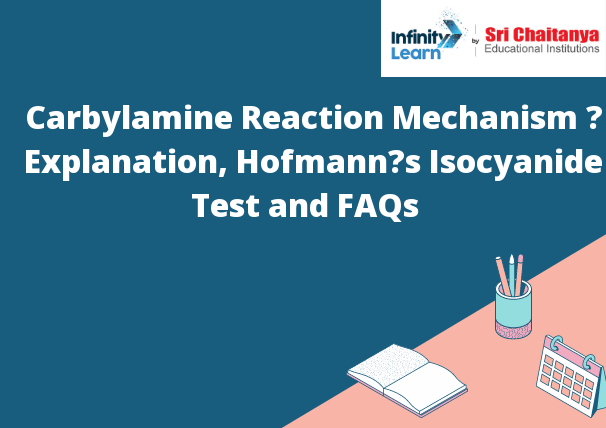Table of Contents
What is the Mechanism of Carbylamine reaction Class 12?
The carbylamine reaction is a chemical reaction between an aldehyde and an amine to form a nitrile. The mechanism of the carbylamine reaction is a two-step process. In the first step, the aldehyde and the amine react to form a Schiff base. The Schiff base then undergoes a hydrolysis reaction to form a nitrile. Carbylamine Reaction Mechanism – Explanation Hofmann’s Isocyanide Test and FAQs.

Hofmann’s Isocyanide Test
Hofmann’s isocyanide test is a qualitative organic chemistry test used to detect the presence of isocyanide functional groups in a molecule. The test uses an aqueous solution of sodium hydroxide and phenolphthalein. A piece of paper is dipped into the solution, then removed and allowed to dry. A positive result is indicated by a pink color on the paper.
Mechanism of the Carbylamine Reaction
The carbylamine reaction is a nucleophilic substitution reaction between an amine and an aldehyde. The mechanism of the carbylamine reaction proceeds in two steps. In the first step, the amine attacks the aldehyde to form a Schiff base. The Schiff base then undergoes a dehydration reaction to form an imine. In the second step, the imine is attacked by a nucleophile to form an enamine. The enamine then undergoes a keto-enol tautomerization to form an enol. The enol then attacks the aldehyde to form a product.
Why does the Carbylamine Reaction not Work in Secondary and Tertiary Amines?
The carbylamine reaction is a chemical reaction between an amine and a ketone, in which a carbylamine is formed. The carbylamine reaction does not work in secondary and tertiary amines because the amine nitrogen is not electron-rich enough to react with the ketone. In addition, the carbylamine reaction is not very efficient, so it is not likely to occur in the presence of secondary or tertiary amines.
Why is the Secondary Amine more Basic than that of the Primary and Tertiary Amines?
A primary amine is more basic than a tertiary amine because the tertiary amine has a more stable electron cloud.
Basicity of Amines Factors
Affecting Basicity
1. The nature of the substituents on the nitrogen atom.
2. The number of substituents on the nitrogen atom.
3. The polarity of the substituents on the nitrogen atom.
Carbylamine Reaction Mechanism – Explanation Hofmann’s Isocyanide Test and FAQs.








